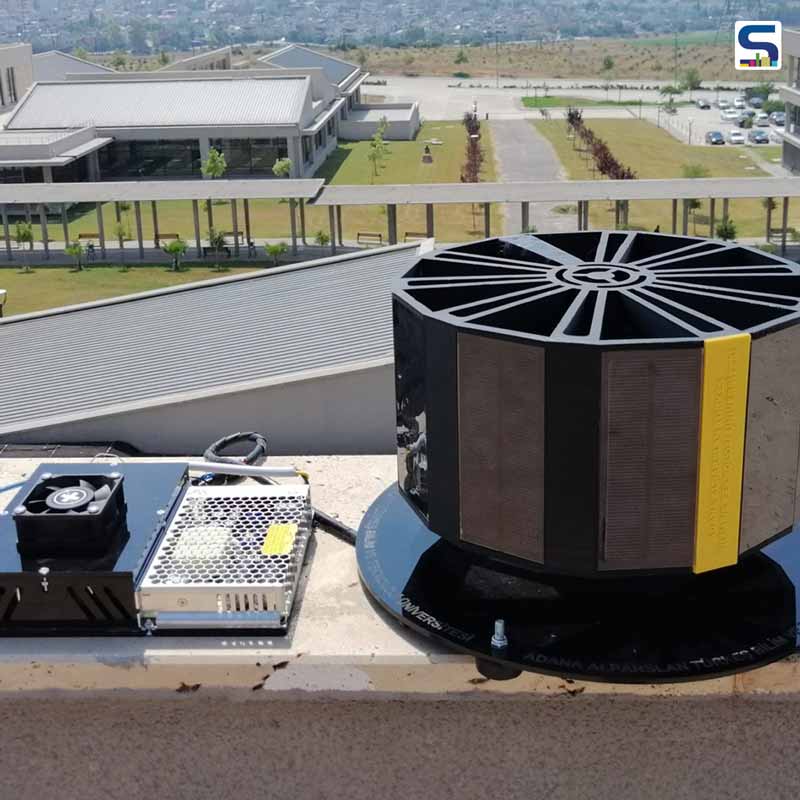
Researchers at Adana Science and Technology University in Turkey has developed a rotary energy system (RES) that can lower photovoltaic module temperatures and can eliminate dust accumulation. Developed using 3D print technology, the single structure is apt for domestic applications and tall buildings in areas with high solar energy and wind energy potential. The scientists are planning to apply MPPT converter topologies to improve the device. Read SURFACES REPORTER (SR)’s complete report below:
Also Read: UP’s Largest Solar Project at A Single Location in Uttar Pradesh | Vikram Solar | Kanpur | SR News update
Scientists describe it as a silent, reliable, energy-efficient, and eco-friendly system that has also been published in the IETE Journal of Research.
Decagonal-Shaped System With Polycrystalline Module
The decagonal shape system hosts a polycrystalline photovoltaic panel on each of its 10 sides. The size of each polycrystalline module is 140×60×2.5 mm and weights just 33g. Each module, with a rated voltage of 6V and a rated current of 100mA, is placed at a distance of 30mm from one another and can convert 17 percent of electrical energy. It is embedded with air ducts measuring 95×150 mm on each of its 10 sides and a slip ring with an efficiency of around 96% to solve the issue of the entanglement of cables in the polycrystalline photovoltaic panels.
How Does it Work?
A stepper motor Nema 23 measuring 56.4×56.4×76 mm and weighing in at 1kg has been used to rotate the entire system. The motor runs with an operating voltage of 8.6 Volts and an operating current of 1 Ampere on each phase.
TB6600 is a stepper motor drive that adjusts the rotation speed while a controller interface controls its speed. As per the researchers, the rotation movement of these modules generates air streams that allow lowering the operating temperatures of solar panels and, simultaneously, that of the entire system. Further, it also reduces the chances of dust accumulation.
The rotating speed of the system lies between 0 and 100 revolutions per minute (rpm). Further, the ambient temperature and solar radiation data are recorded in a measurement station.
According to the researchers, the system is operated with 0, 10, 50, and 100 rpm/h and with solar radiation of between 110 and 1210 W/m2. “Although the highest irradiance value is at 10 rpm, the highest power value produced from the RES has been measured at 100 rpm. The cooling of the PV panels has been realized with the increase of the rotation speed,” they further added.
Also Read: 32 Solar Trees and 50 Real Trees Provide Greenery, Shade and Power to the Shanghai Marketplace | Koichi Takada Architects
The lowest output power of the system was found to be 0.5698 W at operating 10 rpm and 234 W/m2 solar radiation while the highest was 1.8067 W at operating 100 rpm and 756 W/m2 solar radiation
Plan to Integrate MPPT Converter Topologies
The Turkish group said that they are planning to apply MPPT converter topologies to the device to improve its design and efficiency. This will help to make it a more reliable, efficient, and eco-friendly system.
Right now, the system costs around 3500 TL ($288.6). However, these costs date back to 2018 when the researchers started to assemble the prototype.
Photo Courtesy: Adana Science and Technology University
Keep reading SURFACES REPORTER for more such articles and stories.
Join us in SOCIAL MEDIA to stay updated
SR FACEBOOK | SR LINKEDIN | SR INSTAGRAM | SR YOUTUBE
Further, Subscribe to our magazine | Sign Up for the FREE Surfaces Reporter Magazine Newsletter
Also, check out Surfaces Reporter’s encouraging, exciting and educational WEBINARS here.
You may also like to read about:
Green buildings: Going Green Beyond Solar Panels
BIG’s Sweeping ‘CityWave Building’ in Milan Will Be The Largest Urban Integrated Solar Canopy In Europe
And more…